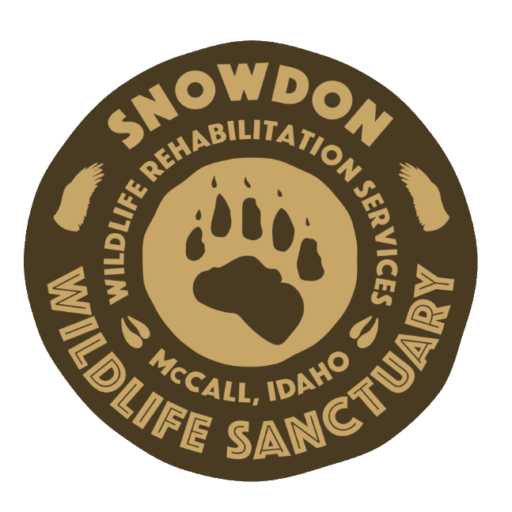Programs
Black Bear Rehabilitation & ReleaseBlack Bear Cub Rehabilitation
& Release Program
Each year Snowdon provides a safe home for orphaned black bear cubs until they are ready to live on their own in the wild. Orphaned cubs are identified and transported to our facility.
Once at Snowdon, the cubs spend their days foraging for food, climbing trees and playing with one another in a spacious two-acre, naturally forested enclosure. Natural food sources are supplemented with dry dog food, fresh fruits and vegetables. Snowdon staff monitor the cubs via trail cameras and on-site viewing. We believe our approach provides a superior strategy to ensure cubs have the best possible chance for successful release.
The program is supervised by retired Idaho Fish and Game (IDFG) Southwest Regional Wildlife Manager, Jeff Rohlman. During his professional career, Rohlman authored the IDFG black bear rehabilitation and release guidelines and protocol, and co-authored the book “A Shadow in the Forest, Idaho’s Black Bear,” which details three decades of research on these magnificent bears.
Background
During various times of the year, black bear cubs become orphaned or permanently separated from their mothers either through den abandonment, vehicle collisions, regulated and unregulated hunter harvest, summer abandonment by the mother due to poor food crops, or wildfire. Four options exist for handling these abandoned individuals:
-
leave them where they are to fend for themselves;
-
capture and place them in permanent captivity (zoo or research facility);
-
capture and place them in a temporary rehabilitation facility for later release; or
-
euthanize them.
All of the above can be appropriate management responses to orphaned bear cubs. However, the reality is that most of these animals will be found in areas where societal pressures make rehabilitation and release the most desirable option.
Roles and Responsibilities
The Idaho Department of Fish and Game oversees wildlife rehabilitation in Idaho and issues rehabilitation permits.
Facilities and Care
-
The International Wildlife Rehabilitation Council (IWRC) and the National Wildlife Rehabilitators Association (NWRA) have minimum standards for housing bears (floor area and height Table 1).
-
These standards are designed to provide adequate space and to minimize stereotypic behaviors (repetitive motions related to stress) of bears while in captivity.
-
Facilities that have large enclosures containing natural vegetation, denning structures and other habitat enrichment features are preferred for rehabilitating cubs.
-
Snowdon Wildlife Sanctuary bear housing facilities exceed IWRC and NWRA standards.
-
Foods that are natural to the bear diet are preferred.
-
Other foods, such as dog food, can meet caloric and nutritional needs.

Black Bear Cub Biology
-
Bear cubs are born in late January/early February and weigh about 14 ounces (the size of a newborn cat).
-
Mothers and nursing cubs of the year usually emerge from the den in early May.
-
Cubs continue to nurse from their mothers until they develop their molars at which time they start incorporating solid foods into their diet (usually in early to mid-June).
-
Cubs stay with their mothers through the summer and den with her the following winter.
-
In their second spring these yearling cubs emerge from the den with their mother in late April/early May and subsequently begin to venture on their own in June or July.
-
Denning behavior is instinctive in black bears (including cubs) and is driven by bear body condition and availability of food resources.
Criteria for Accepting
Cubs for Rehabilitation
-
Age, body condition, level of injury, and food conditioning level all have an effect on the candidacy of a bear cub for rehabilitation.
-
As a rule, cubs without injuries, lacking obvious health issues, and in good body condition showing adequate fat reserves and weighing more than 40 pounds found after August 1 are probably not in need of rehabilitative care.
-
Cubs of the year that are abandoned prior to August 1, or are located after August 1 but are in less than good body condition and generally weigh less than 40 pounds may be candidates for rehabilitation.
Please call Snowdon if you have questions.
